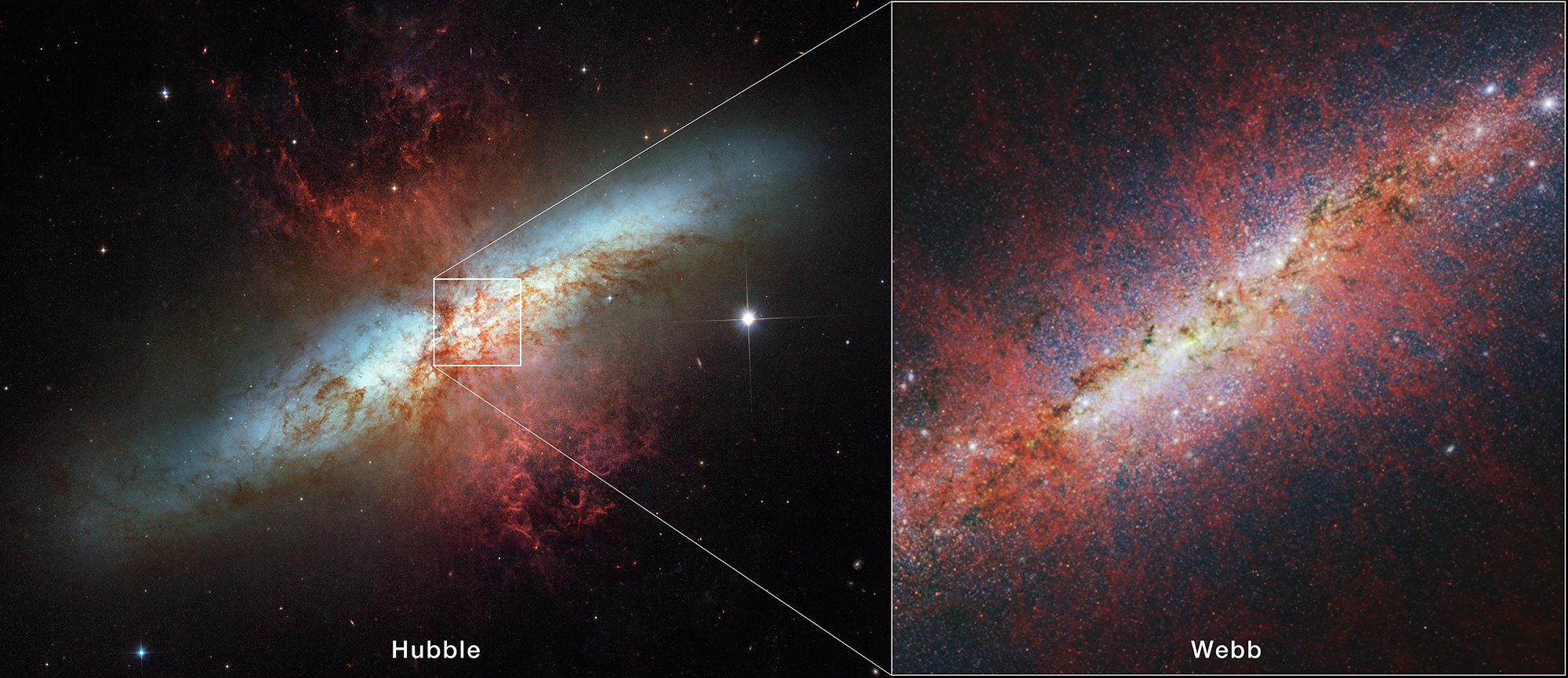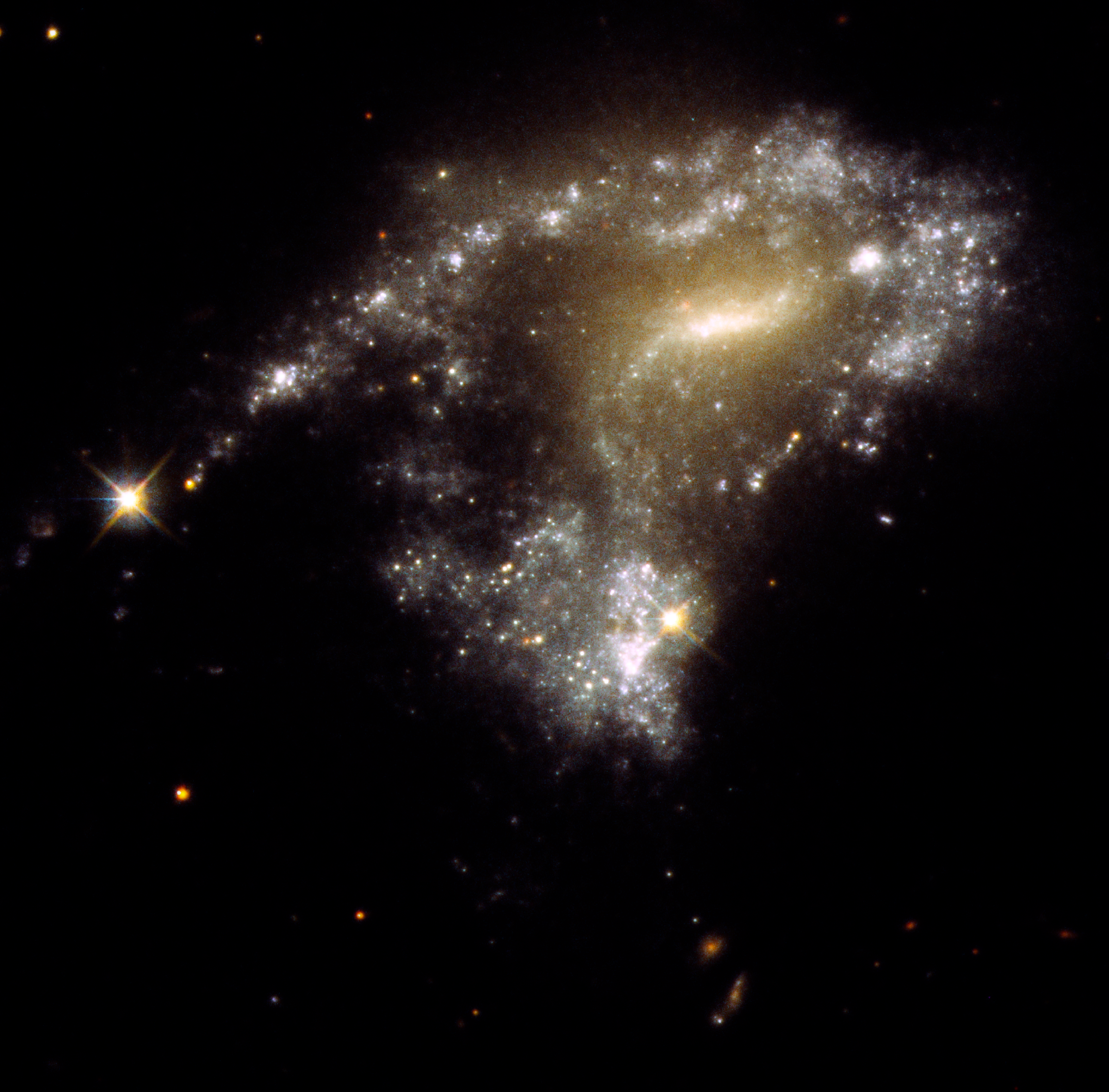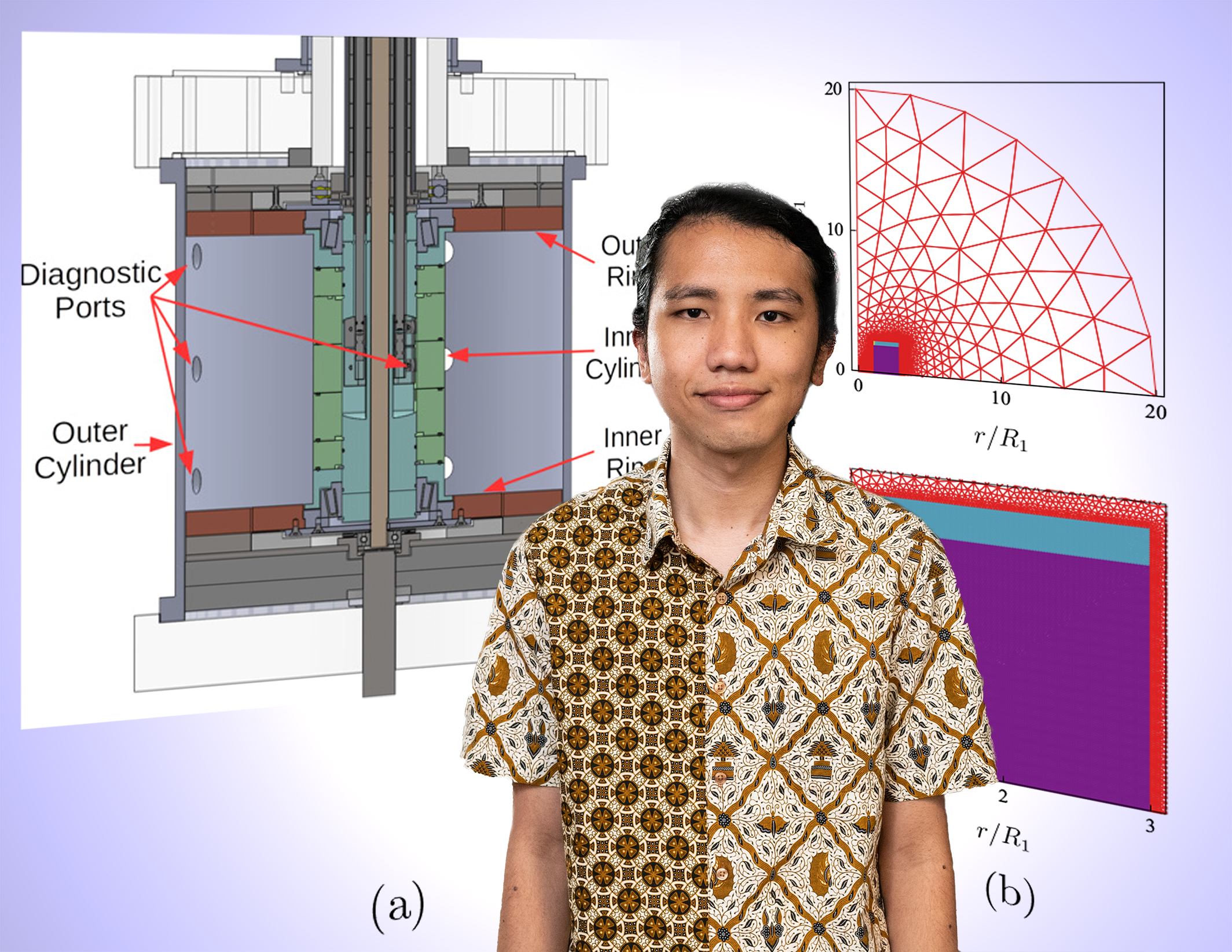NASA’s James Webb Space Telescope has set its sights on the starburst galaxy Messier 82 (M82), a small but mighty environment that features rapid star formation.

news, journals and articles from all over the world.

NASA’s James Webb Space Telescope has set its sights on the starburst galaxy Messier 82 (M82), a small but mighty environment that features rapid star formation.

When galaxies go bump in the night, they cook-up new generations of stars that might otherwise have never been born. These close encounters between galaxies cause a gravitational tug-of-war.
As part of the JWST Cycle 1 Treasury Program, researchers from UC San Diego have released their findings on polycyclic aromatic hydrocarbons in the interstellar medium of nearby galaxies.
Something is amiss in the Butterfly Nebula. When astronomers compared images from 2009 & 2020, they saw dramatic changes in its “wings.” Powerful winds are driving complex alterations of nebular material. It’s unknown how such activity is possible in what should be a “largely moribund star with no remaining fuel.”

Scientists have discovered something unexpected about the Triangulum galaxy: In this satellite galaxy, a close companion of the much larger Andromeda galaxy, old and new stars occur in separate parts of the its structure, something not seen in galaxies like our own and so far not reporter for other satellite galaxies.
Astronomers using the VLBA have produced the first-ever full, 3-D view of binary star system with a planet orbiting one of the stars. Their achievement promises important new insights into the process of planet formation.
While using the Atacama Large Millimeter/submillimeter Array (ALMA) to observe large star-forming regions in the Large Magellanic Cloud (LMC), scientists discovered a turbulent push-and-pull dynamic in the star-forming region, 30 Doradus. Observations revealed that despite intense stellar feedback, gravity is shaping the molecular cloud, and against scientific odds, is driving the ongoing formation of young, massive stars. The observations were presented today in a press conference at the 240th meeting of the American Astronomical Society (AAS) in Pasadena, California, and are published in The Astrophysical Journal (ApJ).
A unique new instrument, coupled with a powerful telescope and a little help from nature, has given researchers the ability to peer into galactic nurseries at the heart of the young universe.
While moving around within the gas in the interstellar medium, cosmic rays kickstart the background protons, which causes a collective plasma wave movement akin to ripples on a lake. The big question is how cosmic rays deposit their momentum into the background plasma. In Physics of Plasmas, plasma astrophysicists review recent developments within the field of studying the streaming instability triggered by cosmic rays, which likely have more impacts on galactic dynamics and the star formation cycle than previously known.
A new survey of our home galaxy, the Milky Way, combines the capabilities of the Very Large Array and the Effelsberg telescope in Germany to provide astronomers with valuable new insights into how stars much more massive than the Sun are formed.
A highly-detailed VLA image indicates that the jets of material propelled outward by young stars much more massive than the Sun may be very different from those ejected by less-massive young stars.
Three dozen dwarf galaxies far from each other had a simultaneous “baby boom” of new stars, an unexpected discovery that challenges current theories on how galaxies grow and may enhance our understanding of the universe. Galaxies more than 1 million light-years apart should have completely independent lives in terms of when they give birth to new stars. But galaxies separated by up to 13 million light-years slowed down and then simultaneously accelerated their birth rate of stars, according to a Rutgers-led study published in the Astrophysical Journal.
New, high-resolution VLA images of a giant molecular cloud where new stars are being born show changes since a set of observations made more than two decades ago. Tracking changes in this region over time can reveal new details about the process of star formation and the interactions of outflows from young stars.
Astronomers used ALMA to study three young, high-mass stars and found a “chaotic mess.” They conclude that their observations support a proposed “disordered infall” model for massive young stars.

New computer simulation aims to verify a widely held but unproven theory of the growth of celestial bodies.
(Study publishes 6/17/20. No embargo.) Mystery enshrouds the birth of swirls typical for supernova remnants like the Crab Nebula. A new “supernova machine” may help solve it.
In some pairs of young stars, astronomers found a “hot corino” of organic molecules around one, but not the other. Researchers studied such a pair with the VLA at radio wavelengths that readily pass through dust, and found the other one.